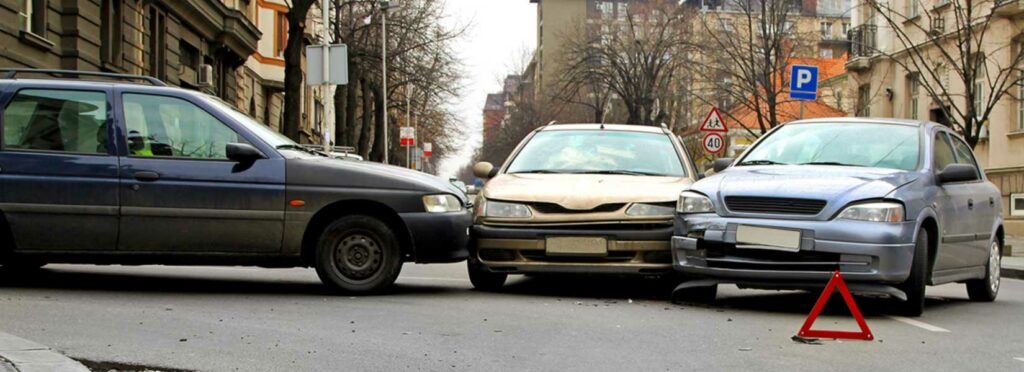In personal injury cases such as a car crash claim involving a single liable party, the process of recovering compensation is relatively straightforward. If you live in an at-fault state like Georgia, you simply file a claim against the at-fault party’s insurance company with the help of an Atlanta car accident lawyer. If your lawyer can prove the fault of the other party, you are entitled to damages.
However, things become a bit complicated when you are involved in a multi-vehicle accident. In such a crash, two or more parties may be at-fault. This is where the joint and several liability rule comes into play.
As per this rule, two or more defendants in a car crash claim may be liable for the full amount of damages independently. This may be regardless of their degree of fault. Here is a look at different variations of the rule as it applies to car accident cases.
What is Pure Joint Liability?
When two or more defendants are fully liable for the full extent of your damages as the crash victim and plaintiff, it is called joint liability. In simpler words, you can recover full compensation from either of the two parties, regardless of their degree of fault. This is particularly helpful in situations where one of the at-fault parties may have no insurance or assets, or if one of the defendants passes away before the claim is settled.
For example, suppose you were going on a highway and were involved in a multi-vehicle crash caused by other parties. Your total damages from the crash amount to $200,000. You can file a car crash claim against all the at-fault drivers, or you can file a single claim against an at-fault party with sufficient insurance. This allows you to recover the full $200,000 in damages from that single driver under the joint liability rule.
What is Pure Several Liability?
Several liability is another variation of the rule which typically applies to a Georgia car crash claim. As per this variation, the plaintiff can recover compensation from each of the defendants proportionate to the fault of the defendants. So if you suffer losses in a crash with multiple at-fault parties, the percentage of fault for each defendant will first be decided.
Once this percentage is known, each defendant will simply pay damages according to this percentage. For instance, suppose three drivers were at-fault in an accident with their percentage of fault at 20%, 30%, and 50% respectively. If you are awarded $100,000 in damages, the at-fault parties must pay you $20,000, $30,000, and $50,000 as per their fault.
The downside to this is that if one of the at-fault parties is uninsured, deceased, or has no assets, you stand to lose that portion of damages.
What is Joint and Several Liability?
This is a third variation of the rule. It’s a middle path between pure joint liability and pure several liability in a car crash claim. As per this variation, all the defendants are still liable for the full extent of damages. The plaintiff can recover the full amount of compensation from either of the defendants, irrespective of their degree of fault. However, the defendants can then settle the amount between themselves in proportion to their degree of fault.
For instance, suppose you incurred losses of $50,000 in a crash where four at-fault parties were involved. You can recover the entire amount of damages from only one defendant. The defendant that has paid can then take legal action to recoup damages from the other at-fault parties.
Benefits of Joint and Several Liability
Joint and several liability offers many benefits, especially for the plaintiff in a car accident claim:
- It can safeguard plaintiff’s rights in case one or more defendant is judgment proof i.e. he/she does not have enough insurance coverage or money to pay the plaintiff, or has passed away.
- Under joint and several liability, the burden of compensation is shifted towards other defendants instead of the plaintiff.
- It improves the odds that you, as a plaintiff, will likely receive full damages no matter the insurance status or financial standing of the individual at-fault parties.
Criticism of Joint and Several Liability
Joint and several liability has also attracted criticism. One of the main objections is that all the defendants are held equally responsible in most variations of this rule. So a defendant who is only 10% at fault is sometimes made to pay 100% of the damages if the other at-fault party is judgment-proof.
These criticisms have led the Georgia Supreme Court to modify the joint and several liability rule in recent years. To better understand how this rule applies to multi-vehicle accidents today, you need to consult a good lawyer.
Hiring a Reliable Atlanta Car Accident Lawyer
If you have been involved in a multi-vehicle accident in Atlanta, GA, you need professional legal help. This is because a good lawyer can help you understand the legal intricacies of joint and several liability. Here at Ted Greve & Associates, we help you recover the maximum amount of compensation for your crash-related losses. Reach out to us today to discuss your car crash claim in a free consultation.


